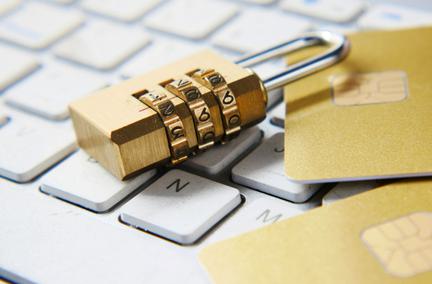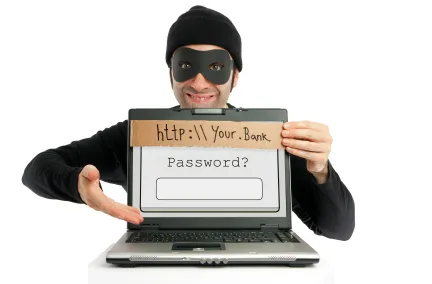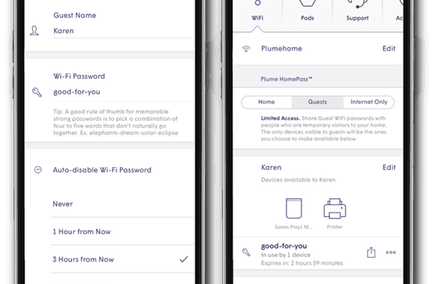Passwords vs. Passkeys: What’s the Difference?
Mar 20, 2025 | Home Technology, Cyber Security, Digital Literacy

We’ve all been there: staring at a login screen, desperately trying to remember which combination of letters, numbers, and symbols we used to create our password. Is the first letter capitalized? Did I use my spouse's birthday? Or is that the bank account password? Or maybe it's my mom's maiden name and old home address. I can't remember.
For years, passwords have been our primary defense against unauthorized access to our online accounts. They’re essentially a string of characters we use to prove our identity when logging in and should keep secret.
But there’s a new kid on the online security block now: passkeys. While serving much the same function, passwords and passkeys are quite different, and understanding that difference is crucial for anyone who wants to keep their online life secure.
This revolutionary authentication method promises to enhance online security while simplifying the user experience.
But what exactly are passkeys, and how do they differ from traditional passwords? We're glad you asked.
The Password Predicament
As good as they are, passwords have some significant drawbacks. For one, they’re often difficult to remember, especially if we follow best practices and use unique, complex passwords for each account. Because complicated passwords are hard to remember, many people reuse the same password across multiple sites or choose weak, easily guessable ones so they won’t forget, but this leaves their data vulnerable to hackers because the password is too simple.
Even strong passwords can be vulnerable to phishing attacks, where cybercriminals trick users into revealing their credentials through fake websites or emails.
Moreover, passwords are typically stored on servers, which we can’t control and hackers can target in data breaches. Millions of passwords can be exposed when these breaches occur, putting users at risk across multiple platforms if they’ve reused their credentials.
Even multi-factor authentication, which adds another layer of protection, can be vulnerable to hackers if a weak password accompanies it.
Enter Passkeys: The Next Generation of Authentication
Passkeys represent a significant leap forward in online security. Unlike passwords, which rely on something you know (a memorized string of characters), passkeys use something you have (your device) combined with something you are (such as a fingerprint or your face) or another something you know (a PIN) to authenticate you.
At their core, passkeys utilize public key cryptography, a sophisticated encryption method involving a pair of public and private keys. The public key is stored on the server of the service you’re using, while the private key remains securely on your device. When you want to log in, your device uses the private key to solve a cryptographic challenge sent by the server, proving your identity without transmitting the key.
This system offers several advantages over traditional passwords. First, it’s much more resistant to phishing attacks because the authentication process is tied to the specific website or app you’re using. Your passkey won’t work on a fake site. Second, since the private key never leaves your device, there’s nothing for hackers to steal from the server in the event of a data breach.
The User Experience: Simplicity Meets Security
One of the most appealing aspects of passkeys is how they simplify the login process. Instead of typing in a long, complex password, you can often authenticate using biometric methods like facial recognition or fingerprint scanning on your smartphone or computer. This makes logging in faster and more convenient and eliminates the need to remember multiple passwords.
Major tech companies like Apple, Google, and Microsoft are backing passkeys, integrating support into their operating systems and browsers. Many smartphones, including Apple and Android, have passkeys built in already. You may be using this technology every day and not realize it because it’s so seamless. (Think unlocking your phone or logging into banking apps using your face.)
Why the Difference Matters
The shift from passwords to passkeys represents more than just a technological upgrade; it’s a fundamental change in how we approach online security. Here’s why this difference matters:
Enhanced Security: Passkeys offer significantly stronger protection against common threats like phishing attacks, credential stuffing, and brute-force attempts. By eliminating users’ need to enter credentials manually, passkeys remove many of the vulnerabilities associated with traditional passwords.
Improved User Experience: With passkeys, users no longer struggle to remember complex passwords or constantly change them. The authentication process becomes seamless, often requiring just a quick PIN entry or just a face scan with the built-in camera.
Reduced Burden on Users: Users are no longer responsible for maintaining strong, unique passwords for every account. Passkeys are automatically generated and managed by the device or operating system, reducing the cognitive load on users.
Reduction of Data Breach Impacts: Since passkeys don’t rely on shared secrets stored on servers, the impact of data breaches is significantly reduced. Even if a server is compromised, attackers can’t obtain usable credentials to access user accounts.
Passwordless Future: Passkeys pave the way for a truly passwordless future, where the frustrations and security risks associated with traditional password management become a thing of the past.
Adoption and Challenges
While passkeys offer numerous advantages, their widespread adoption outside of mobile devices faces some challenges. Not all websites and apps currently support passkeys, meaning users will need to continue managing passwords for some accounts for now. Additionally, the transition to passkeys requires a bit of user education and getting accustomed to how passkeys work. Like all new technology, it takes a little getting used to but gets easier over time.
Passkeys are becoming more popular. Major platforms and services, including Google accounts, Apple’s iCloud Keychain, and Microsoft’s authentication systems, have already implemented passkey support. As more online services adopt this technology, we can expect to see a gradual shift away from traditional passwords.
The Future of Passwords & Passkeys
As the digital ecosystem evolves, many of us will likely use a combination of passwords and passkeys. Password managers remain valuable tools for securely managing existing password-based accounts. As passkey support expands, users should take advantage of this technology where available, enjoying its enhanced security and convenience.
The transition from passwords to passkeys represents a significant step forward in cybersecurity. By understanding the differences between these authentication methods and embracing new technologies, we can all contribute to a safer, more user-friendly online environment. As passkeys become more prevalent, we may finally bid farewell to the era of forgotten passwords and welcome a new age of effortless, secure authentication.
- cybersecurity
- passwords
- passkey
- online security






